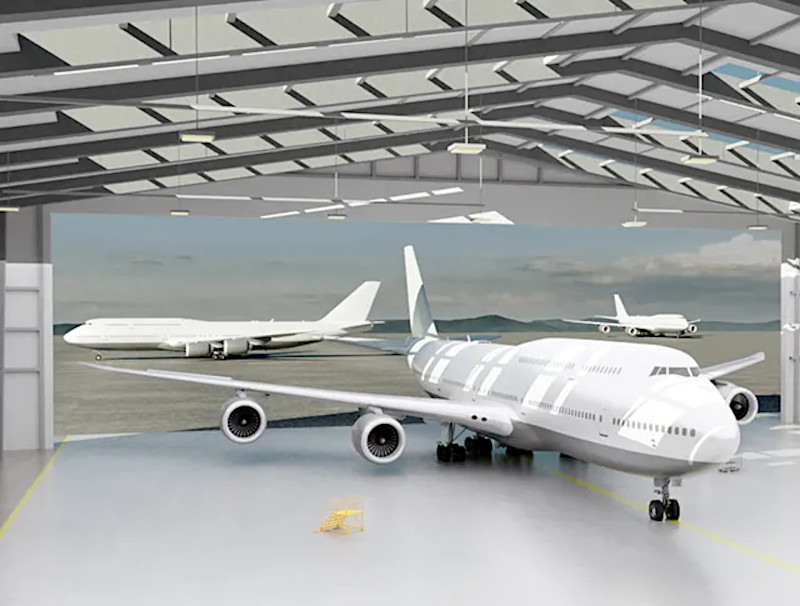The US Air Force announced on April 26 that it awarded Sierra Nevada Corporation a staggering $13 billion contract to develop and produce the successor aircraft to replace the aging E-4B Nightwatch, also known as the “doomsday planes.”
The aging E-4B, known as Nightwatch or the National Airborne Operations Center, has been a stalwart of US defense strategy since the 1970s.
These aircraft are specifically designed to facilitate communication and command-and-control functions for the President and military commanders in the event of a catastrophic nuclear war or other dire emergencies that render ground-based command centers inoperable.
However, as the four existing E-4Bs reached the end of their service lives, a modernized replacement was urgently needed.
Moreover, maintenance has become progressively more challenging and costly due to the obsolescence of parts. The E-4B is anticipated to approach the end of its operational lifespan in the early 2030s, necessitating a transition.

The Pentagon said that the new aircraft, designated as the Survivable Airborne Operations Center (SAOC), is slated to be operational by July 10, 2036.
An Air Force spokesperson said, “The development of this critical national security weapon system ensures the department’s nuclear command, control, and communications capability is operationally relevant and secure for decades to come.”
The company will work on SAOC in Englewood, Colorado; Sparks, Nevada; Beavercreek, Ohio; and Vandalia, Ohio.
Sierra Nevada Corporation’s contract encompasses the development and production of SAOC, including engineering and manufacturing development aircraft, production aircraft, associated ground systems, and interim contract support.
In the appropriations allocated by Congress for fiscal 2024, the Air Force has earmarked $744 million for this year’s investment in the SAOC program. In its fiscal year 2025 request, the service aims for approximately $1.7 billion.
The SAOC initiative is among several multibillion-dollar projects the Air Force is embarking on to update its nuclear arsenal, spanning from a new nuclear ballistic missile to a long-range stealth bomber.
The US Air Force’s Next Doomsday Plane
The victory secured by Sierra Nevada Corporation (SNC) represents one of the most significant endeavors in the mid-size firm’s history, catapulting it into a prominent position within the aerospace industry.
The outcome of the competition was somewhat anticipated following Boeing’s unexpected elimination from contention. Boeing, the incumbent manufacturer responsible for the current E-4B fleet comprising highly modified Boeing 747-200 jumbo jets, was considered a heavyweight contender for the contract.
However, after reported difficulties in reaching an agreement with the Air Force on the contract’s structure and data rights, Boeing’s prospects diminished, paving the way for SNC’s success.
SNC now faces the task of integrating essential military systems, such as air refueling and secure communications, and fortifying commercial aircraft against electronic and nuclear threats.
The Air Force plans to procure 8-10 aircraft for the SAOC program, possibly acquiring used models if a Boeing 747 is chosen for militarization.

According to an Air Force spokesperson, the selected aircraft will undergo extensive modifications to meet military specifications, emphasizing the utilization of a modular open systems approach for development.
Ground support systems will also be established to facilitate operations, maintenance, and future enhancements throughout the lifecycle of the SAOC weapon system.
While not officially confirmed, industry speculation strongly suggests that SNC’s SAOCs will likely be conversions of second-hand late-model 747-8is.
This assumption arises from the Air Force’s stipulation for four engines and operational security concerns, which seemingly align with the capabilities of the 747 platform. Thus, it limits proposals based on other aircraft types.
Simultaneously, Boeing is converting a pair of 747s that were abandoned by a bankrupt Russian airline.
However, the discontinuation of new-production 747 airframes in 2022 has constrained options for the SAOC project. The extent to which technologies from the VC-25B configuration may be applied to the SAOC configuration remains uncertain.
Nonetheless, the upcoming aircraft will assume the critical role currently fulfilled by the Air Force’s four E-4Bs, also known as National Airborne Operations Centers (NAOC) jets.
The E-4B’s mission revolves primarily around providing a resilient and survivable airborne command post designated for use by the President of the United States through the National Command Authority (NCA).
This capability enables the initiation of a nuclear strike from any location globally, hence earning the aircraft the colloquial moniker ‘doomsday planes.’
In addition to their nuclear command role, the Nightwatch jets boast secure communications and other functionalities, making them adaptable for directing various military operations or contingency responses, including those necessitated by severe natural disasters.
- Contact the author at ashishmichel(at)gmail.com
- Follow EurAsian Times on Google News




